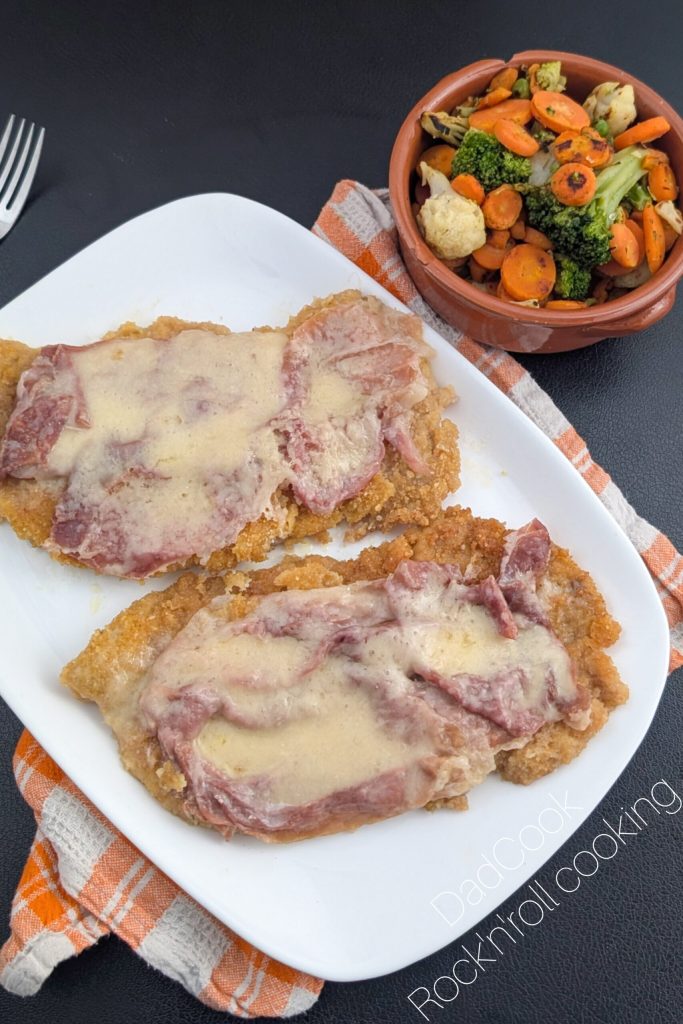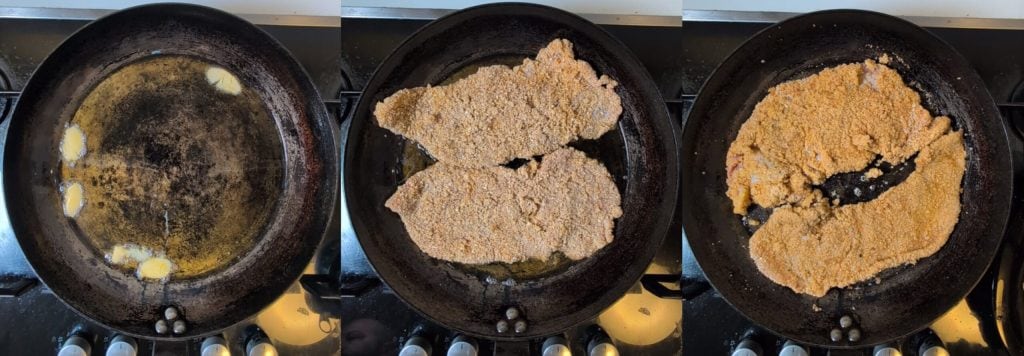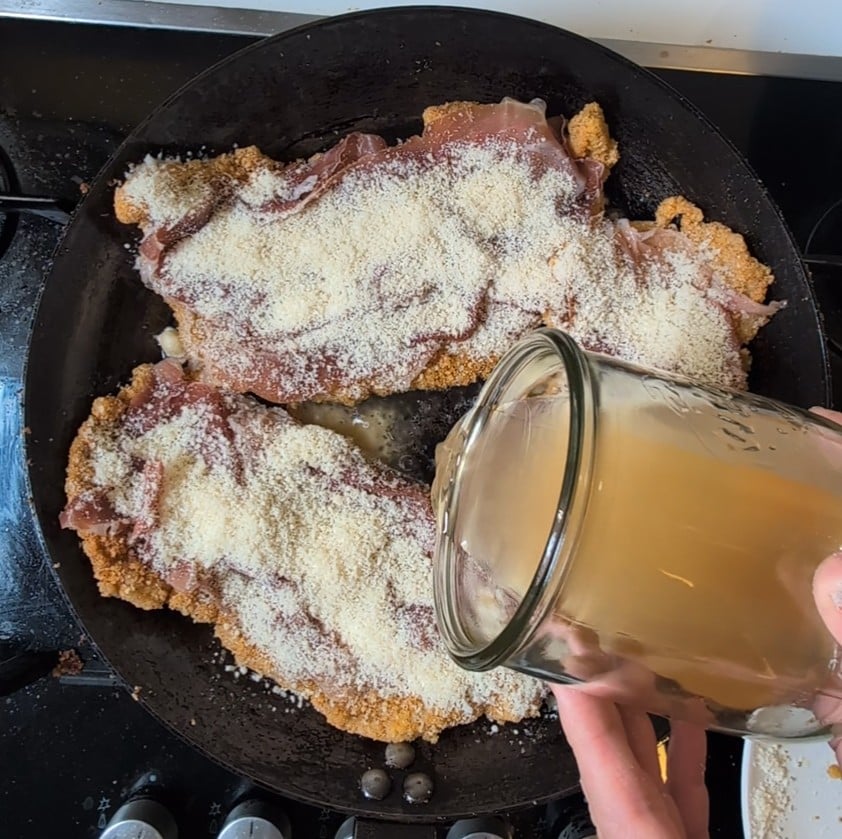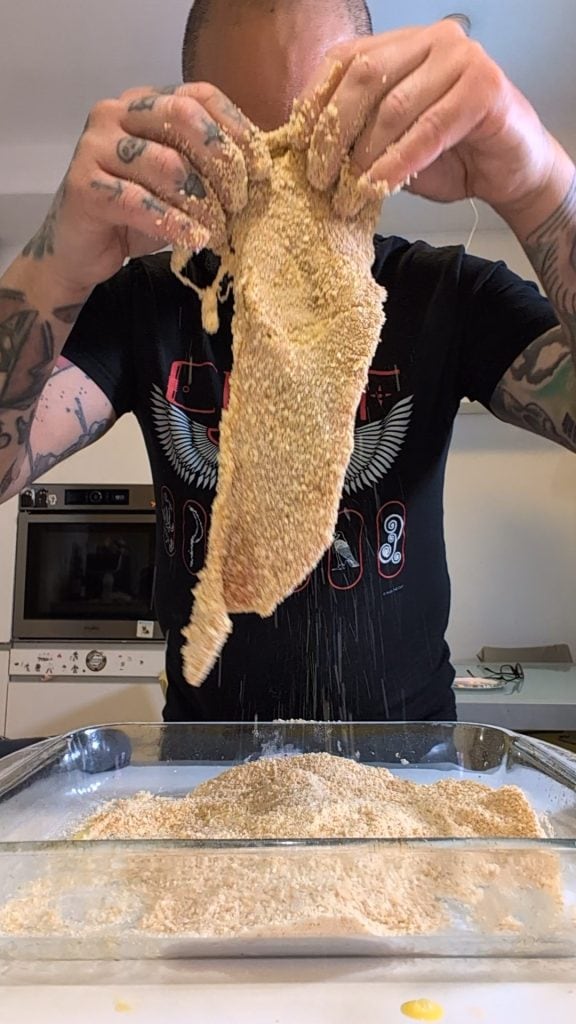Hello everyone and welcome to my blog “Giallozafferano DadCook”!
Today I propose a recipe that will literally drive you crazy: the Bolognese cutlet, revisited with my personal touch!
The Bolognese cutlet is a staple of Emilian cuisine, loved throughout Italy.
A rich and enveloping main course, perfect for special occasions or an unforgettable family dinner.
My version stands out for some tricks that make it even more special: I use clarified butter for perfect frying and a thicker breading that gives unparalleled crunchiness.
The tenderness of the meat then does the rest!
If you want to discover how to prepare a Bolognese cutlet like real chefs, follow my steps and get ready for a taste explosion!
I’m waiting for you in my kitchen, DadCook!

- Difficulty: Very easy
- Cost: Affordable
- Rest time: 5 Minutes
- Preparation time: 15 Minutes
- Portions: 4
- Cooking methods: Stovetop
- Cuisine: Italian
- Seasonality: All seasons
- Energy 900.85 (Kcal)
- Carbohydrates 18.60 (g) of which sugars 1.43 (g)
- Proteins 53.09 (g)
- Fat 67.90 (g) of which saturated 35.44 (g)of which unsaturated 28.62 (g)
- Fibers 1.18 (g)
- Sodium 1,615.40 (mg)
Indicative values for a portion of 310 g processed in an automated way starting from the nutritional information available on the CREA* and FoodData Central** databases. It is not food and / or nutritional advice.
* CREATES Food and Nutrition Research Center: https://www.crea.gov.it/alimenti-e-nutrizione https://www.alimentinutrizione.it ** U.S. Department of Agriculture, Agricultural Research Service. FoodData Central, 2019. https://fdc.nal.usda.gov
Ingredients
To prepare this Bolognese delight, we will need simple but high-quality ingredients.
Here’s what we need for 4 servings:
- 4 slices veal
- 150 g prosciutto crudo
- to taste all-purpose flour
- to taste breadcrumbs
- 4 eggs
- 80 g Grana Padano PDO
- 200 ml meat broth
- 150 g clarified butter
- to taste salt
- 1 pinch black pepper
Tools
As with any respectable recipe, we will also need some kitchen tools for our Bolognese cutlet.
Nothing complicated, promised!
Here’s what we need:
- 3 Baking Dishes Pyrex
- 1 Pot Agnelli
Steps
Now that we have all the ingredients and tools at hand, it’s time to get to work!
Follow these simple steps and together we’ll prepare a Bolognese cutlet that’s finger-licking good:
Meat Preparation:
Take the veal slices and, with a meat mallet, lightly flatten them to make them more tender and uniform.
Season both sides with salt and pepper to taste.

Breading:
Prepare three plates: one with flour, one with beaten eggs, and one with breadcrumbs.
Dip each slice first in the flour, making sure to cover it completely.
Then dip the slice in the beaten egg, ensuring it adheres well.
Finally, coat the slice in breadcrumbs, pressing lightly to make it stick.

Frying:
In a large pan, pour plenty of clarified butter and melt it over medium heat.
When the butter is hot, lay down the breaded cutlets and fry them for about 3-4 minutes per side, until they are golden and crispy.

Topping and Final Cooking:
Move the fried cutlets to a plate or, if the pan is large enough, leave them in it.
Place a slice of prosciutto crudo on each cutlet and sprinkle with plenty of grated Parmigiano Reggiano.
Pour the meat broth into the pan, lower the heat, cover with a lid, and let cook for about 5 minutes until the cheese has melted and the broth has created an enveloping sauce.

Serving and Tasting:
Transfer the Bolognese cutlets to individual plates, drizzling with the Parmesan and prosciutto sauce.
Serve immediately while hot, and enjoy every bite of this rich and flavorful dish.
Bon appétit!

The Bolognese cutlet is a versatile dish that lends itself to various interpretations.
Here are some tips to personalize it, delicious variations, and tips for storing it well:
Tips:
For an even crunchier breading, try adding a tablespoon of grated Parmesan to the breadcrumbs.
If you prefer a lighter version, you can bake the cutlets instead of frying them.
Place them on a baking sheet lined with parchment paper, drizzle with a little oil, and bake at 350°F for about 20-25 minutes, turning them halfway through cooking.
For an extra touch of flavor, you can deglaze the broth with a splash of white wine before adding the cutlets.
In the stuffing phase, you can vary the quality of the cold cuts. Instead of prosciutto crudo, it’s also delicious with Bologna IGP mortadella
Variations:
Bolognese Cutlet with Mushrooms:
Add sliced champignon or porcini mushrooms to the broth during the final cooking for a more intense flavor.
Bolognese Cutlet with Tomato Sauce:
For a richer version, you can add a couple of tablespoons of tomato sauce to the broth.
For an extra touch, you can add a grating of nutmeg to the filling.
Storage:
The Bolognese cutlet is best enjoyed freshly made.
If there are leftover portions, you can store them in the fridge in an airtight container for up to 1 day.
To reheat, you can put them in the oven at 350°F for a few minutes or heat them in a pan with a little broth.
Freezing is not recommended.

FAQ (Questions and Answers)
Do you still have any doubts about the Bolognese cutlet? Here are the answers to the most frequently asked questions to help you prepare a perfect dish:
Can I prepare the Bolognese cutlet in advance?
Yes, you can prepare the breaded cutlets in advance and store them in the fridge for a few hours.
However, I recommend frying and seasoning them just before serving for the best result in terms of crispiness and flavor.
What type of broth is best to use?
Meat broth is the traditional choice, but you can also use chicken or vegetable broth, depending on your preferences.
The important thing is that it’s a high-quality broth to enhance the flavor of the dish.
Can I use other types of cheese instead of Parmigiano Reggiano?
Parmigiano Reggiano is the traditional ingredient, but you can experiment with other hard cheeses, such as Grana Padano or Pecorino Romano.
However, keep in mind that the flavor of the dish may vary.
How can I prevent the breading from falling off during cooking?
Make sure the meat slices are well dried before breading them.
Also, use fresh eggs and good quality breadcrumbs.
Press the breading onto the meat slightly to make it adhere well.
Can I use rice flour for the breading?
Absolutely!
Rice flour is a great alternative, especially for those who are gluten intolerant.
It will give a particular crunchiness to the breading.

